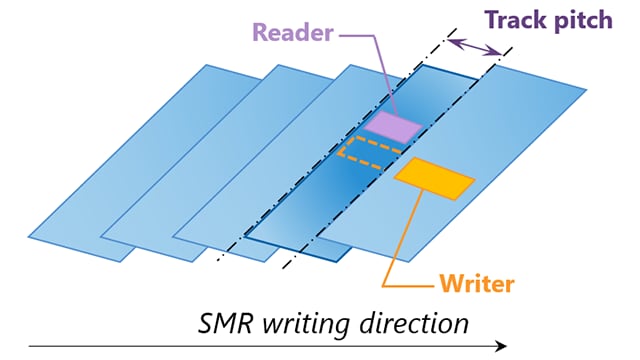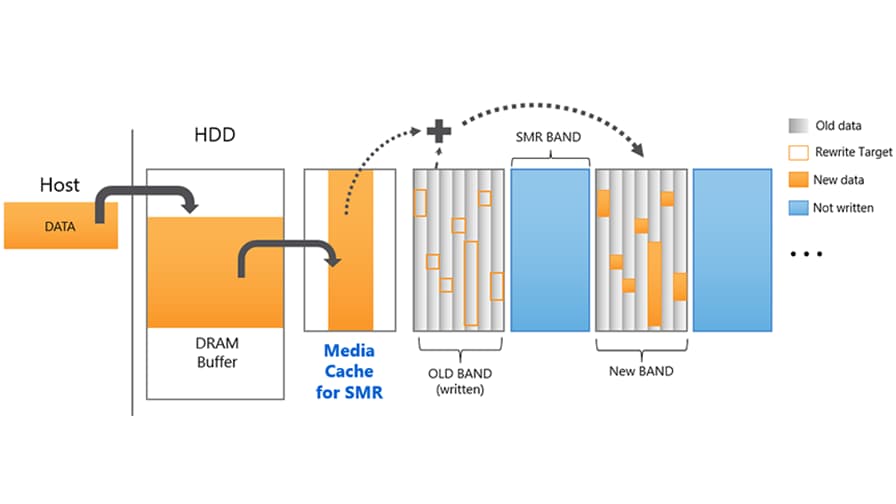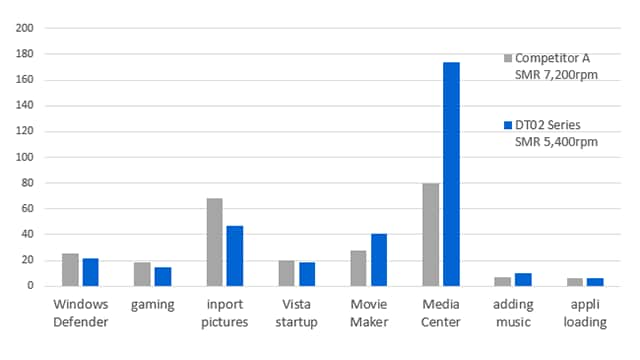What is SMR Technology?
Description
SMR(Shingled Magnetic Recording) is overwriting part of the previously written track analogous to the shingling of a roof.
CMR and SMR each have their Pros and Cons.

- Pros
Can directly re-write data into previously written sector - Cons
Use of discrete tracks limits the rate at which areal density increases can be achieved

- Pros
More efficient use of recording surface area achieves higher data capacity compared to CMR - Cons
Because the tracks are overlapping, re-writes directly into previously written sectors are no longer possible. The recovery of space containing outdated data may affect performance.
How Toshiba SMR helps to maintain random write performance
Toshiba’s innovative Media Cache design, allows the hard drive to efficiently process randomly written data updates to previously written data sets.
New data is temporarily written from DRAM Buffer to the Media Cache.
After merging old data and new data, the revised data is written sequentially to another SMR BAND.
This helps to avoid a decrease in performance when re-writing data, which was previously a downside to SMR.

What is the result of the solution?
PCMark® is an industry standard PC benchmark tool to test the performance of a PC at the system and component level. DT02 Series (SMR 5,400rpm) achieved a higher performance result than Competitor A’s (SMR 7,200rpm).


PC ENVIRONMENT:
Tool: PCMark® Vantage
System: GIGABYTE H97-GAMING 3 (Intel CoreTM i5-4460 3.20GHz/ 8GBRAM)
Drivers: Intel Desktop/Workstation/Server Express Chipset SATA AHCI Controller v. 12.8.0.1016
OS: Windows 10 v1903 x64
Lineup
Below products adopt SMR technology.